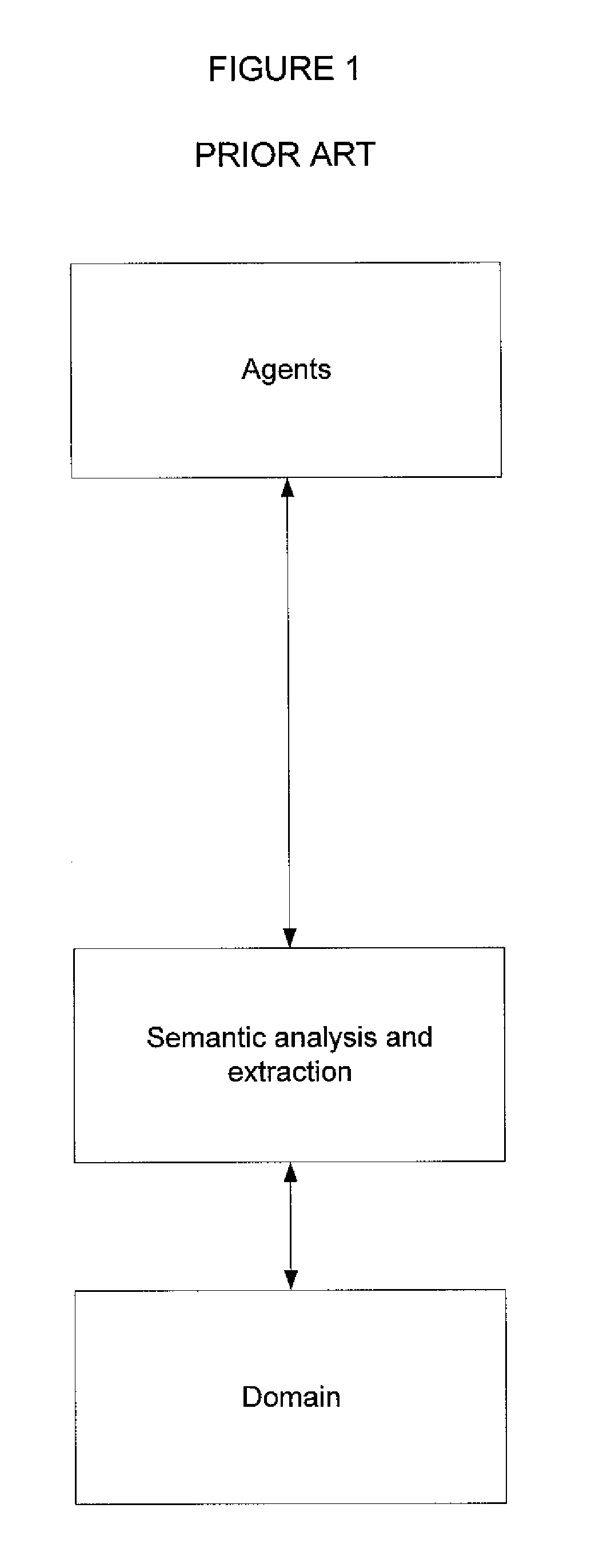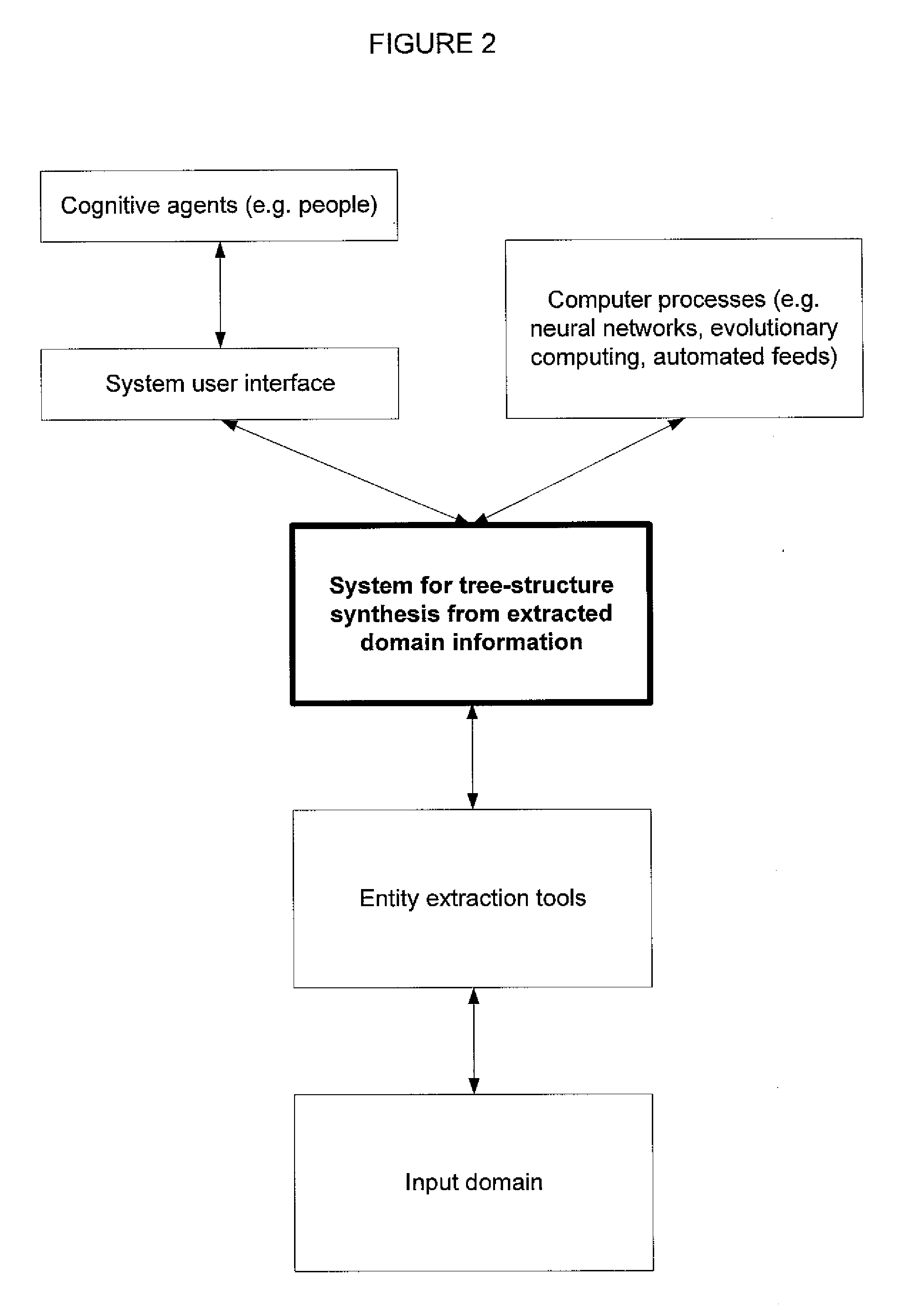Systems and methods for semantic concept definition and semantic concept relationship synthesis utilizing existing domain definitions
a semantic concept and domain definition technology, applied in the field of systems and methods for semantic concept definition and semantic concept relationship synthesis utilizing existing domain definitions, can solve the problems of limited generation and use of knowledge representations, difficult preparation of knowledge representations, and significant scale barriers imposed by current systems
- Summary
- Abstract
- Description
- Claims
- Application Information
AI Technical Summary
Benefits of technology
Problems solved by technology
Method used
Image
Examples
Embodiment Construction
[0021]Visual Basic and Windows are registered trademarks of Microsoft Corporation in the United States and other countries. Linux® is the registered trademark of Linus Torvalds in the U.S. and other countries.
[0022]There are disclosed herein a method, system and computer program providing means for provisioning concept definition and concept relationship synthesis. These aspects of the invention capitalize on the properties of tree structures and a semantic representation that models the intrinsic definition of a concept. As such, new concepts and concept relationships may be created in a way that is not constrained by any historical or existing knowledge representation. Thus, some embodiments of the present invention provide for a new, creative and user-directed expression of semantic representation and networking (graphs). This results in an ability to synthesize forward-looking knowledge, not merely the extraction of historical knowledge.
[0023]A practical utility of this approach...
PUM
 Login to View More
Login to View More Abstract
Description
Claims
Application Information
 Login to View More
Login to View More - R&D
- Intellectual Property
- Life Sciences
- Materials
- Tech Scout
- Unparalleled Data Quality
- Higher Quality Content
- 60% Fewer Hallucinations
Browse by: Latest US Patents, China's latest patents, Technical Efficacy Thesaurus, Application Domain, Technology Topic, Popular Technical Reports.
© 2025 PatSnap. All rights reserved.Legal|Privacy policy|Modern Slavery Act Transparency Statement|Sitemap|About US| Contact US: help@patsnap.com



